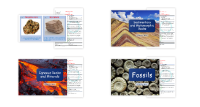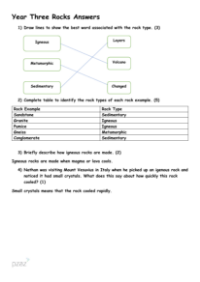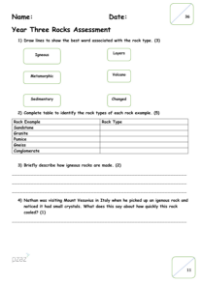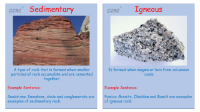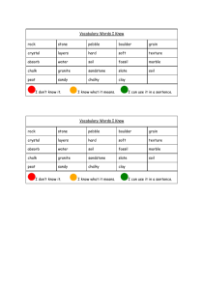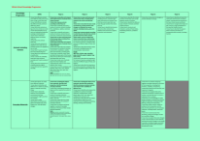Rocks - Knowledge Organisers

By the end of the unit on rocks, students will be able to identify and describe the three naturally formed rock types: igneous, sedimentary, and metamorphic. Igneous rocks form when molten magma cools either beneath the Earth's surface or as lava from erupting volcanoes, and examples include granite and basalt, which are known for their strength and non-porous nature. Sedimentary rocks, like limestone and chalk, develop over millions of years from layers of sediment—weathered rock fragments found at the bottom of water bodies. These rocks are porous and more susceptible to wear. Metamorphic rocks are created when igneous and sedimentary rocks are subjected to intense heat and pressure, resulting in new forms such as slate and marble, which are typically strong. The unit clarifies that bricks and concrete are not considered rocks as they are man-made materials.
Additionally, students will learn about fossils, the preserved remains of prehistoric life, which are usually formed by the burial of plants or animals under sediment over extended periods. Fossils can be actual preserved parts such as bones and teeth or imprints left in sedimentary rock. They provide insights into Earth's history and the life that existed millions of years ago. The unit also covers soil composition, which includes rock particles, minerals, decaying organic matter, and water, and explains how soil forms through the breakdown of rock into grains, with layers that range from leaf litter to bedrock. Prior knowledge such as the role of Mary Anning in paleontology, soil nutrients, and the concept of absorption is expected to be known. Vocabulary terms such as 'permeable', 'porous', and 'bedrock' are defined to aid understanding of the topics covered.
